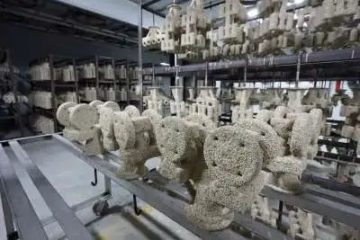Every country has processing and manufacturing industries, and there are always one or two industries that are doing well. Therefore, what we need to do is to constantly learn and summarize other people’s manufacturing experience(including the future of MADE IN AMERICA). So what are the prospects for foreign processing and manufacturing industries?
1. Transfer of comparative advantage
Comparative advantages will shift, and middle-income countries, especially many emerging Asian economies, will be able to develop comparative advantages in increasingly technology-led manufacturing. China and the United States lead in artificial intelligence and its deployment in manufacturing and, along with Western Europe, account for the majority of investment in IoT technology.
2. From business outsourcing to business reshoring
While technology has boosted productivity in today’s manufacturing centers and largely offset rising wages, it has also lowered capital costs and slowed the need to move production to low-wage countries. In fact, there is an emerging trend of global manufacturing production moving to certain developed economies.
3. The manufacturing industry will move toward service-oriented
In advanced economies, the prospects for growth in manufacturing value added are stronger, and the increased contribution of the service industry may lead to a rising share of manufacturing in GDP. Among developing economies, manufacturing’s top share of GDP is likely to continue to decline as technology erodes its comparative advantage in low-labor cost production.
4. Mechanization and skilled labor for manufacturing work
If history is any guide, the future will bring new demands for labor and unforeseen occupations. As technological change, U.S. Manufacturing Innovation Policy and automation reshape demand for labor, particularly in manufacturing and other industries with greater levels of automation, demand for new tasks and different and higher-level skills is likely to grow.
5. Developing countries still have many opportunities
Not all global trends point to a decline in developing countries’ ability to develop manufacturing, but upside will be more limited and require significant investment in skills and infrastructure. As with all economies, change can be easily managed if they have the right skills, infrastructure and policy frameworks in place.
The reason why Global Machining and Manufacturing Industry choose to carry out processing and manufacturing abroad is to save costs. For this reason, not all manufacturing industries are suitable for processing abroad, so careful choices must be made.


